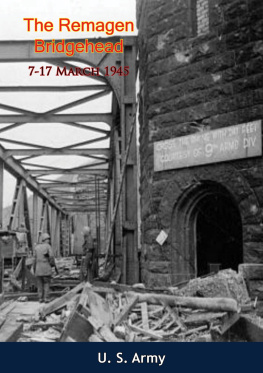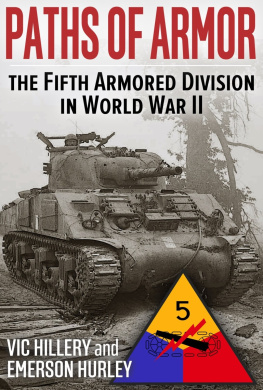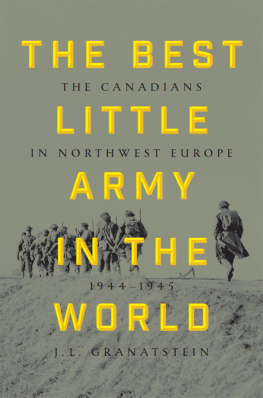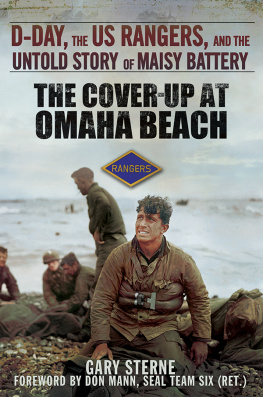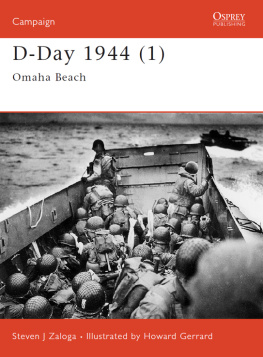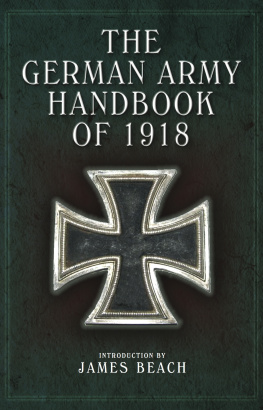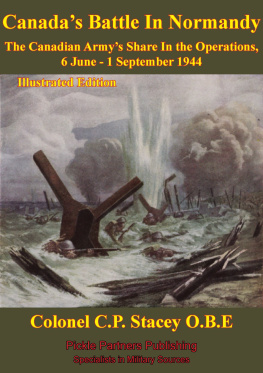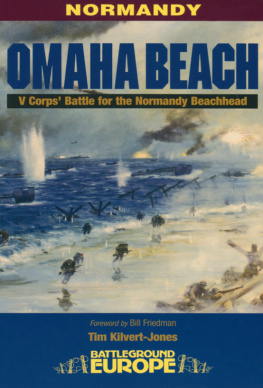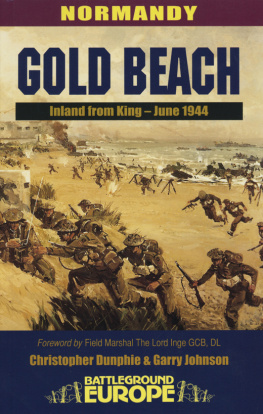E-BOOK CONTENTS
The Battle for
OMAHA BEACH
D-Day, June 6, 1944
The Official History
by the U.S. Army
Modern Annotated Edition
Illustrated in Color & Sepia
Boston Hill Press
Classic Quality E-Book , 2014
The Battle for Omaha Beach, D-Day, June 6, 1944: The Official History by the U.S. Army , Modern Annotated Edition
Original text was first published as Omaha Beachhead in 1945 by the U.S. Army. Publisher's note; editor's modern introduction; glossary; editor's modern epilogue; captions; revised text and annotations; and note about illustrations are Copyright (c) 2014 by David W. Bradford All rights reserved. This book contains original creative expression and is protected by copyright law.
This electronic book is published in 2014 in the United States by Boston Hill Press , Editorial Offices, P.O. Box 215583, Town & Country Post Office, Sacramento, CA 95821 .
Publisher's Cataloging-in-Publication Data: Army, U.S. The battle for Omaha Beach, D-Day, June 6, 1944 : the official history by the U.S. Army/ U.S. Army, historical division. David W. Bradford, editor. Modern annotated edition. Electronic book.
World War, 1939-1945--Campaigns--Western Front. World War, 1939-1945--France. World War, 1939-1945--Amphibious operations .
I. Taylor, Charles H. (1899-1984) II. Bradford, David W. (1953- ) III. Title.
D761 .U55 2014
940.542
Cover design by Boston Hill Press.
T he Battle for Omaha Beach, D-Day, June 6, 1944 was first published at war's end in 1945 as Omaha Beachhead by the U.S. Army. The official historian was Colonel Charles Taylor, a former professor at Harvard University. His book is one of the best official histories of the Second World War, rivaling the work of Samuel Eliot Morison, the historian for the U.S. Navy.
Colonel Taylor's depiction of the Battle for Omaha Beach is solid, concise, and incisive. Written only months after the events, his book stands the test of time and remains the standard for books about Omaha Beach, the decisive landing of D-Day. The U.S. Army awarded Colonel Taylor the Legion of Merit, a prestigious medal for outstanding service.
This is a modern annotated edition. Editor David W. Bradford explains for a new generation the unique form of warfare conducted on D-Day. He adds both a new introduction and a new epilogue, updating us on the continuing relevance of D-Day to our modern world. Additional explanation is noted by [brackets] in the main text.
Maps have been digitally restored in color, and in many cases, re-typeset, to improve readability. Photographs are a revised mix of reprints and archival images available after 1945. Captions and text are edited accordingly. Many images are colorized or tinted to enhance detail and depth. Of particular interest are aerial photos taken by U.S. spy planes before D-Day. They appear in color here for the first time. This is the definitive modern edition of The Battle for Omaha Beach .

VoteLincoln!
The Presidential Campaign Biography of Abraham Lincoln, 1860
Could he still win the White House today?
Read his book and decide.
most authoritative and influential
New York Times
You are about to embark upon the Great Crusade .... The hopes and prayers of liberty-loving peoples everywhere march with you.... Let us all beseech the blessing of Almighty God upon this great and noble undertaking.
--General Dwight D. Eisenhower to Allied troops
I t has been 70 years nearly three quarters of a centurysince the Allied invasion of Nazi-occupied France on D-Day, June 6, 1944. Virtually by definition, most Americans alive today can have no direct memory of the event. Each day, hundreds of retired veterans themselves pass into history, those who conducted the greatest amphibious invasion ever.
Moreover, an entire generation has grown to adulthood since the 50th commemoration of D-Day in 1994, one of the grandest since the Second World War. At that time, still robust ex-servicemen, along with distinguished television newsmenmany who had been combat correspondentsjourneyed from the United States, Canada, and Europe to France. There they observed a moment that was as solemn as it was joyful. Broadcast to both sides of the Atlantic Ocean, the ceremonies were attended by modern presidents and royalty, as well as veterans, active-duty soldiers, and citizens.
All around them, in the thriving, democratic Western Europe of the year 1994, was vindication of the sacrifices of a passing generation. Peace and prosperity was the divine fruit of hard labors. Contrary to the pessimism that now prevails, D-Day, June 6, 1944, proved that Western Civilization, as intended by Almighty God, can defeat a powerful evil. D-Day is about religious faith, not just by Christians, but also by their Jewish brothers and sisters. (On the eve of D-Day, the massive Allied invasion fleet conducted religious services at sea. Aboard darkened ships tossed by stormy waters, tens of thousands of servicemen and women prayed to God about the coming battle at dawn.)
Religious services at sea before D-Day.
The Second World War was the last in which American troops faced enemy bullets without body armor, or the medical miracles that saved so many of the wounded in future wars. (Helicopters for rapid evacuation did not yet exist.) American flesh and blood charged into hot lead and flaming steel, unprotected. All knew then, in a way that few do today, that sometimes most will die. Some battles must be costly, and, for Americans, Omaha Beach, June 6, 1944, was to be one of those battles. God would be with the living and the dead, and many sensed it beforehand.
The Great Crusade - The invasion of Normandy, France in June 1944 was necessary because of the German conquest of Europe four years earlier. Led by the murderous dictator Adolf Hitler, the Nazi rulers of a debased Germany imposed a brutal reign of terror from Russia in the East, to Scandinavia, Holland, and France in the West. Nazi ideology echoed the savagery of pre-Christian, pagan Europe. The conquerors committed mass murder and enslaved millions. Six million Jews alone lost their lives; millions of other peoples also died.
Not all Germans were guilty of these atrocities. Many, including Protestant clergy, protested at the cost of their own lives. Indeed, the German military commander in Normandy, Field Marshal Erwin Rommel, was renown for treating prisoners humanely and later died a martyr. Hitler forced him to take poison, after a failed attempt to overthrow the Nazis, and seek negotiations with the Western Allies. (Winston Churchill lionized Rommel, the only major German war leader respected today by the Western Allies. It is worthwhile to remember that perhaps as many as a third of U.S. servicemen were of German descent. This included their supreme commander, General Dwight D. Eisenhower, and several senior officers at Omaha Beach. The War in Europe was a clash of religions , as much as it was of nations, pitting Judeo-Christian values against ancient evil.)
Nevertheless, Nazi Germany, a totalitarian state committed to total war, could only be stopped by counterforce. In 1944, the United States and Great Britainthe only major European power not conquered or neutralized by the Naziswere the core of that avenging force. (A dozen smaller nations fought alongside the Anglo-American armies, e.g., Canada, Australia, New Zealand, Poland, Free France, Norway, etc.) With an amphibious landing in German-occupied France, these Western Allies sought to create a base, or lodgement, from which to liberate Europe, invade Germany, and destroy the Nazi rgime.


